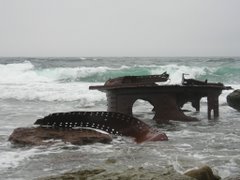 Phenology, from phenomenology, is the science dealing with the influence of climate on such annual phenomena of animal and plant life as bird migrations, blooming, etc. The observant fisherman can predict when trout fishing will be most productive by noting details such as water and air temperatures, insect and plant appearances.
Phenology, from phenomenology, is the science dealing with the influence of climate on such annual phenomena of animal and plant life as bird migrations, blooming, etc. The observant fisherman can predict when trout fishing will be most productive by noting details such as water and air temperatures, insect and plant appearances.
In my yard, there is a perfect indicator plant species for Brook Trout - the Nanking Cherry, an ornamental shrub. It is an attractive bush, about 6 feet in height, bearing profuse pink or white blooms and edible fruit. A native indicator species is Shadbush (Amelanchier arborea) also known as Juneberry, Indian Pear, or Downy Serviceberry. The first blossoms appear when the water temperature reaches 50F/10C and remain on the plant for about 2 weeks. At this time, Brook Trout are more active and flyfishing more productive. Depending on the weather, this period occurs any time from late April to late May in Southwest Nova Scotia.
Two factors influence trout behavior to create ideal fishing conditions: 1) The trout's body temperature rises to its optimum level and 2) major insect hatches provide abundant food supply. During this peak period, Brook Trout often feed on or near the surface and show their positions to the angler, greatly improving his chances for success.
There is a recurring dream that I have... winds are light, the air warm, sky overcast. Big dark Mayflies are rising skyward and all around, trout are making the water fly as they greedily smash at the struggling Ephemeroptera. The fly floats in the air, then kisses the water, six feet from the nearest trout. In my canoe, just downstream and 30 feet to the right, my eyes are glued to the dead-drifting fly; my left hand gathers in slack line as it approaches the spot. There is no surprise when the trout rises to inhale my offering. I raise the tip, the rod bows - the fish is on!
Perfect flyfishing moments like this can be rare, but easier to find if you learn to observe relationships between natural indicators and major insect hatches. I keep a fishing log, and record date, time of day, air and water temperature, plants and animals observed, as well as fish caught and fly patterns. I like to look back over the years of data and see how my catches (and releases) steadily improve. It's not that my skills are much better - but I know better when and where to fish.
Good Luck and Good Fishin'!
Random Phrump




No comments:
Post a Comment